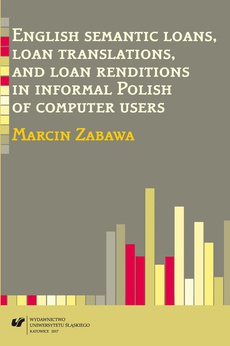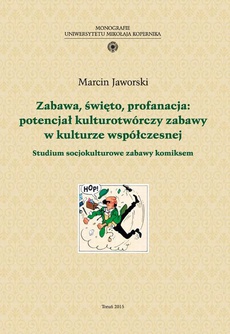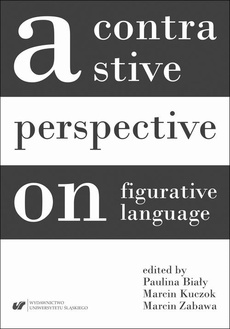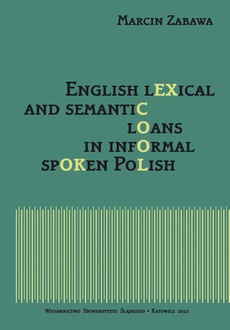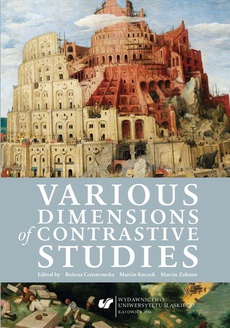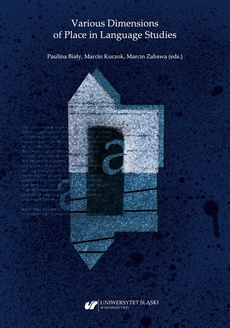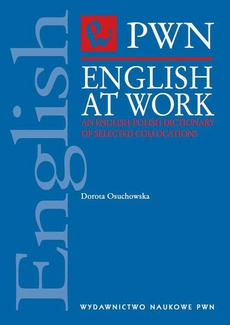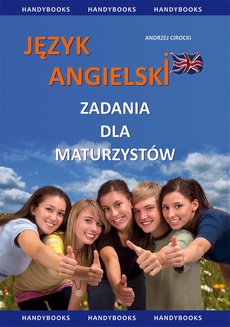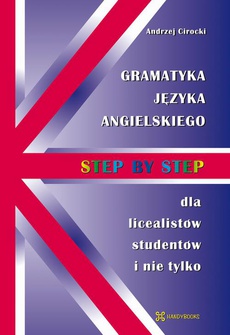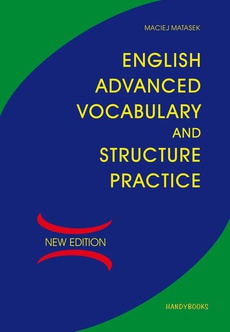INNE EBOOKI AUTORA
English semantic loans, loan translations, and loan renditions in informal Polish of computer users
Autor:
Wydawca:
Format:
pdf, ibuk
Monografia Marcina Zabawy to całościowe i szczegółowe omówienie angielskich zapożyczeń semantycznych oraz kalk leksykalnych i frazeologicznych (dokładnych i niedokładnych) w potocznej polszczyźnie informatyki. Podstawą pracy jest korpus tekstów zebrany samodzielnie przez autora; w jego skład wchodzą krótkie teksty (posty, wpisy) pochodzące z wybranych 32 forów internetowych o tematyce komputerowo-internetowej. Łączna wielkość korpusu to ponad półtora miliona słów. Monografia zawiera bardzo szczegółowy opis ponad 200 zapożyczeń semantycznych oraz ponad 500 kalk z dziedziny informatyki.
Poza częścią stricte materiałową, praca zawiera także obszerne omówienie teoretyczne problematyki zapożyczeń semantycznych i kalk, a także języka forów internetowych. Monografia opisuje również w bardzo szczegółowy sposób proces budowy korpusu językowego.
Publikacja adresowana jest do badaczy zajmujących się problemem kontaktu językowego, zapożyczeniami (zwłaszcza zapożyczeniami semantycznymi i kalkami), a także językiem informatyki oraz Internetu (ze szczególnym uwzględnieniem języka forów internetowych). Może ona także zainteresować badaczy planujących budowę własnego korpusu językowego. Praca może być również pomocą słownikową dla tłumaczy zajmujących się tekstami informatycznymi, a ponadto może zainteresować osoby, które chcą rozumieć współczesny język informatyki, zwłaszcza w jego mniej oficjalnej odmianie.
| Rok wydania | 2017 |
|---|---|
| Liczba stron | 374 |
| Kategoria | Język angielski |
| Wydawca | Uniwersytet Śląski |
| ISBN-13 | 978-83-226-3073-0 |
| Język publikacji | angielski |
| Informacja o sprzedawcy | ePWN sp. z o.o. |
POLECAMY
Ciekawe propozycje
Spis treści
| Table of contents | |
| Introduction / | 9 |
| Chapter1: Electronic varieties: Internet communication and Internet forums / | 13 |
| 1.1 Introduction / | 13 |
| 1.2 Language variation: Register, dialect, sociolect, genre, and style / | 14 |
| 1.2.1 Definitions of the terms / | 14 |
| 1.2.2 Components of register description / | 16 |
| 1.3 The notion of Internet language and Internet communication / | 18 |
| 1.3.1 Types of Internet communication / | 18 |
| 1.3.2 General features of Internet language / | 19 |
| 1.3.3 Linguistic features of Internet communication / | 22 |
| 1.4 Situational description of Internet forums / | 25 |
| 1.5 Concluding comments / | 28 |
| Chapter 2: Semantic loans, loan translations, and loan renditions: Theoretical considerations / | 29 |
| 2.1 Introduction / | 29 |
| 2.2 Semantic loans: Theoretical aspects / | 30 |
| 2.2.1 Introductory comments /30 | |
| 2.2.2 Semantic loans and semantic neologisms: Definitions and general characteristics / | 30 |
| 2.2.3 Semantic loans: Examples of terminological confusion / | 35 |
| 2.2.4 Semantic loans: Types of semantic change according to the direction of the semantic modification / | 37 |
| 2.2.5 Semantic loans: Types of semantic change according to the element Affected / | 39 |
| 2.2.6 The influence of semantic loans on the existing system / | 40 |
| 2.3 Loan translations: Theoretical aspects / | 42 |
| 2.3.1 Introductory comments / | 42 |
| 2.3.2 Loan translations: Definitions / | 43 |
| 2.3.3 Loan translations: Classification / | 45 |
| 2.4 Problems connected with the identification of semantic loans and loan Translations / | 50 |
| 2.4.1 Introductory comments / | 50 |
| 2.4.2 Distinguishing between semantic loans and native semantic innovations / | 51 |
| 2.4.3 Distinguishing between semantic loans and lexical re-borrowings / | 54 |
| 2.4.4 Distinguishing between loan translations and native phrasal innovations / | 56 |
| 2.4.5 Distinguishing between semantic loans and loan translations / | 59 |
| 2.4.6 Distinguishing between loan translations and loan renditions / | 63 |
| 2.4.7 The status of loan creations / | 66 |
| 2.4.8 Distinguishing between loanblends (semi-calques) and hybrids /67 | |
| 2.4.9 Distinguishing between loan translations or loanblends and lexical borrowings / | 69 |
| 2.5 The emergence of semantic loans and loan translations / | 70 |
| 2.6 The reasons for introducing semantic loans and loan translations / | 73 |
| 2.7 Normative assessment of semantic loans and loan translations / | 77 |
| 2.8 English semantic loans and loan translations in Polish / | 80 |
| 2.8.1 General observations / | 80 |
| 2.8.2 English semantic loans and loan translations in Polish: Literature review / | 82 |
| 2.9 English semantic loans and loan translations in the Polish language of computer science / | 88 |
| 2.9.1 Introductory remarks / | 88 |
| 2.9.2 Metaphorical innovations in the English language of computer science /88 | |
| 2.9.3 Brief discussion on English semantic loans and loan translations in the Polish language of computer science / | 91 |
| 2.10 Concluding remarks / | 95 |
| Chap t e r 3: The corpus of informal Polish of computer users: General description / | 97 |
| 3.1 Introduction / | 97 |
| 3.2 Priority of Internet texts / | 98 |
| 3.3 Definition and types of corpora / | 103 |
| 3.4 The description of the present corpus / | 107 |
| 3.4.1 General information / | 107 |
| 3.4.2 Corpus compilation / | 109 |
| 3.4.3 The size / | 110 |
| 3.4.4 The structure of the corpus / | 110 |
| 3.4.5 The respondents / | 111 |
| 3.4.6 The status of the language of the corpus / | 112 |
| 3.4.7 The level of formality of the texts / | 114 |
| 3.5 Research questions / | 116 |
| 3.6 Concluding comments / | 117 |
| Chapter 4: The analysis of semantic loans and loan translations found in the corpus / | 119 |
| 4.1 Introduction / | 119 |
| 4.2 The methodology / | 119 |
| 4.3 Problems connected with corpus analysis / | 121 |
| 4.4 The format of the description / | 124 |
| 4.5 The analysis of semantic loans and loan translations / | 128 |
| 4.5.1 Introductory remarks / | 128 |
| 4.5.2 Single-word loan translations and loan renditions / | 129 |
| 4.5.3 Loan translations and loan renditions not connected with a semantic loan / | 130 |
| 4.5.4 Semantic loans with or without simultaneous loan translations and renditions / | 136 |
| 4.6 Concluding comments / | 266 |
| Chapter 5: Conclusions / | 267 |
| 5.1 Introduction / | 267 |
| 5.2 Semantic loans found in the corpus: Statistical analysis / | 267 |
| 5.3 L oan translations and renditions found in the corpus: Statistical analysis / | 281 |
| 5.4 C oncluding comments / | 285 |
| Appendix 1: Internet forums included in the corpus / | 287 |
| Appendix 2: Semantic loans, loan translations, and loan renditions in context / | 291 |
| Appendix 3: Semantic borrowings found in the corpus / | 321 |
| Bibliography / | 327 |
| Index of names / | 357 |
| Subject index / | 363 |
| Streszczenie / | 367 |
| Zusammenfassung / | 369 |

